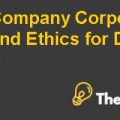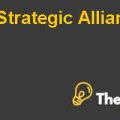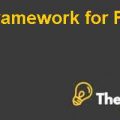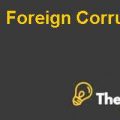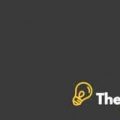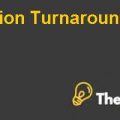
Question 3: Is Taylor’s assessment that the forward exchange contract qualified for cash-flow-hedge accounting correct?
DEFINITION OF CASH-FLOW-HEDGE:
Cash flow hedge is a hedge of the exposure to variability in cash flows that is attributable to a special risk associated with all or a part of a recognized asset or liability or a highly probable forecast transaction, and could affect net income or loss.Every bit in the case of Fair Value hedge, there isn’t any specific accounting treatment is available until a number of criteria are met.
QUALIFICATION CRITERIA FOR CASH-FLOW-HEDGE:
Following are the eight selected qualifying criteria for a cash flow hedge are:
1. At the start of the hedge, there must be a proper and formal documentation of the contract and the company’s risk-management objectives and strategies. Documentation must also identify the instrument being hedged, the hedging transaction, the nature of the risk hedged, and the details about the effectiveness of the hedge.
2. Both at the start and on regular basis till the expiry of the contract, the contract relationship must be assessed in order to determine that if it is highly effective in receiving cash flows attributable to the hedged instrument’s fair value. The effectiveness of the hedging instrument must be evaluated whenever financial statements or earnings are reported i.e. at year end and at least after every three months.
3. If an instrument being hedged is used to modify variable interest rates on an underlying asset or liability to another variable interest rate (such hedged instruments are known as swaps), the instrument being hedged must have a relationship between a recognized asset with different rates and a recognized liability with variable rates.
4. The future or forecasted transaction must be identified as a single transaction or as a group of individual transactions.
5. The future or forecasted transactions arewith an external party will occur, and presents exposure or vulnerability to variability in cash flows that could directly or indirectly affect the company’s earnings.
6. The future or forecasted transaction is not the specific evidence of the acquisition or incurrence of an asset orliability that will relatively be measured at fair value with changes in fair value is recognized in company’s retained earnings. If the future or forecasted transaction is related to an underlying asset or liability, such specific asset or liability must not bere-measuredwith changes in fair value reported in current earnings.
7. If there is a future or forecasted contract for the sale or purchase of non-financial items or non-monetary items (such as inventory), the risk will the possible fluctuations or changes in cash flows due to fluctuations in price or rate rather than a fluctuationsin cash flows due to a difference in location or a component part.
8. If there is afuture or forecasted contract for the sale or purchase of a financial asset or liability (or the payments on that asset or liability) or the fixed or variable cash flows associated with an already existing financial asset or liability can be called as a hedged itemsif specific or certain types of risks, for example those related to fluctuations in cash flows, banks specified interest rates, foreign currency exchange rates and creditworthiness can be hedged. Two or more than two of the above risks may be hedged mutually and simultaneously.
DIFFERENCE BETWEEN FAIR VLAUE AND CASH-FLOWHEDGE:
There is a primary divergence in a cash flow and a fair value hedge that only one, i.e. Cash flow hedge has a kinship with an asset that provides regular payments to the holder company.While both cash flow hedge and fair value hedge are used to hedge against possible fluctuations or changes in the value of the underlying asset, the cash flow hedge is more referred to changes in one or more types of interest rates such as interest rate risk on a floating rate debt instrument.The hedged instruments are normally reported in fair value each period with a portion being identified in Other Comprehensive Income (OCI) and presented in Equity i.e. normally in Derivatives reserves.The deviation between the effective percentage of average value of hedge instrument and the ineffective portion i.e. the total change in the fair value is instantly realized in the current year’s Profit or Loss account.The change in the fair value of hedge instrument that was deferred in OCI will be reclassified in Profit or Loss account in the future date when the instrument affects the Profit or Loss account.
Cash flow hedge is a hedge of the exposure to variability in the cash flows of a specific asset or liability, or of a forecasted transaction, that is attributable to a particular risk.So the assessment of the Assistant Jim Taylor the forward contract qualified for Cash Flow hedge accounting is correct as the company routinely receives royalties from its subsidiaries outside the territory of United States.....................................
This is just a sample partial case solution. Please place the order on the website to order your own originally done case solution.

